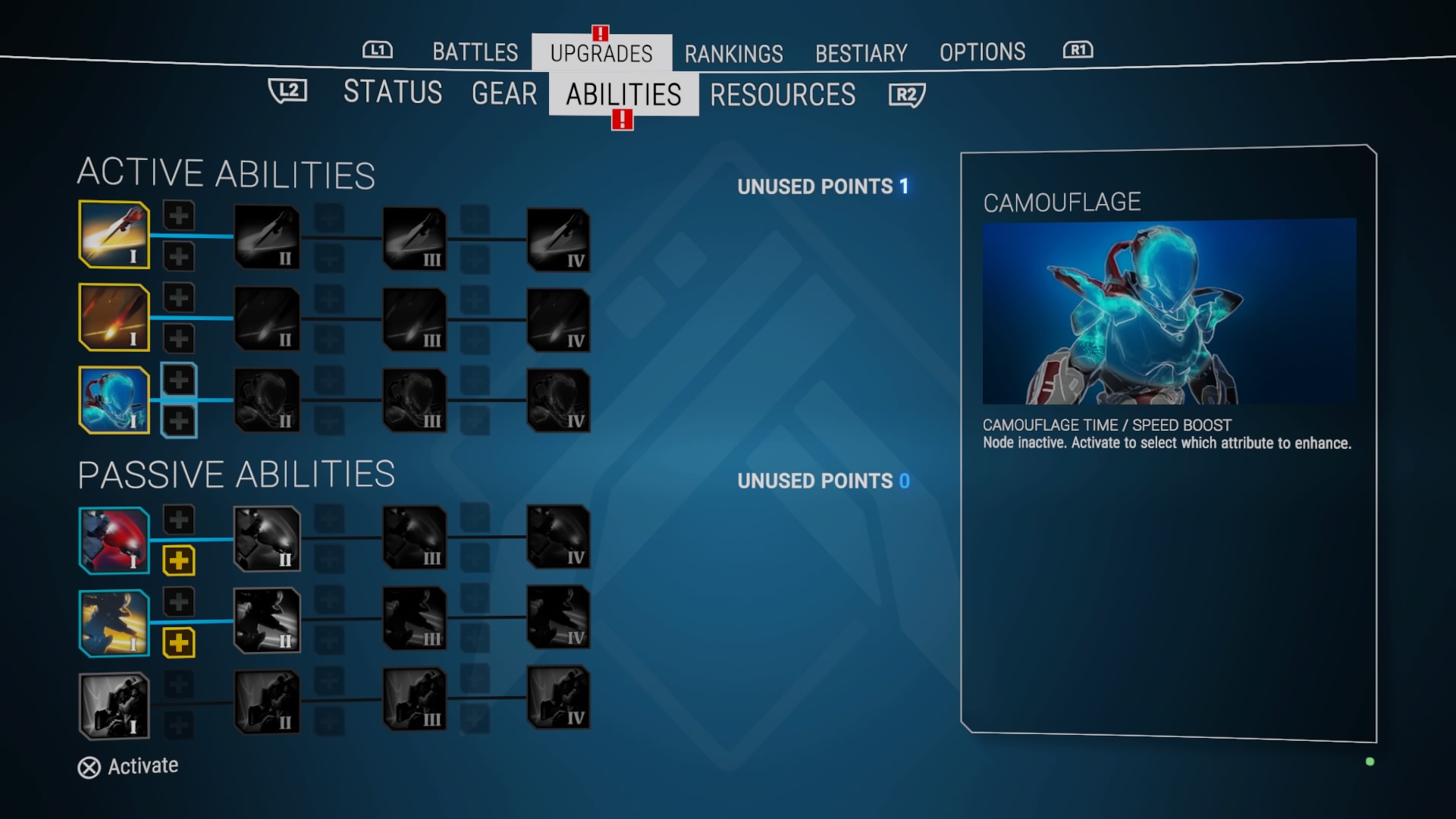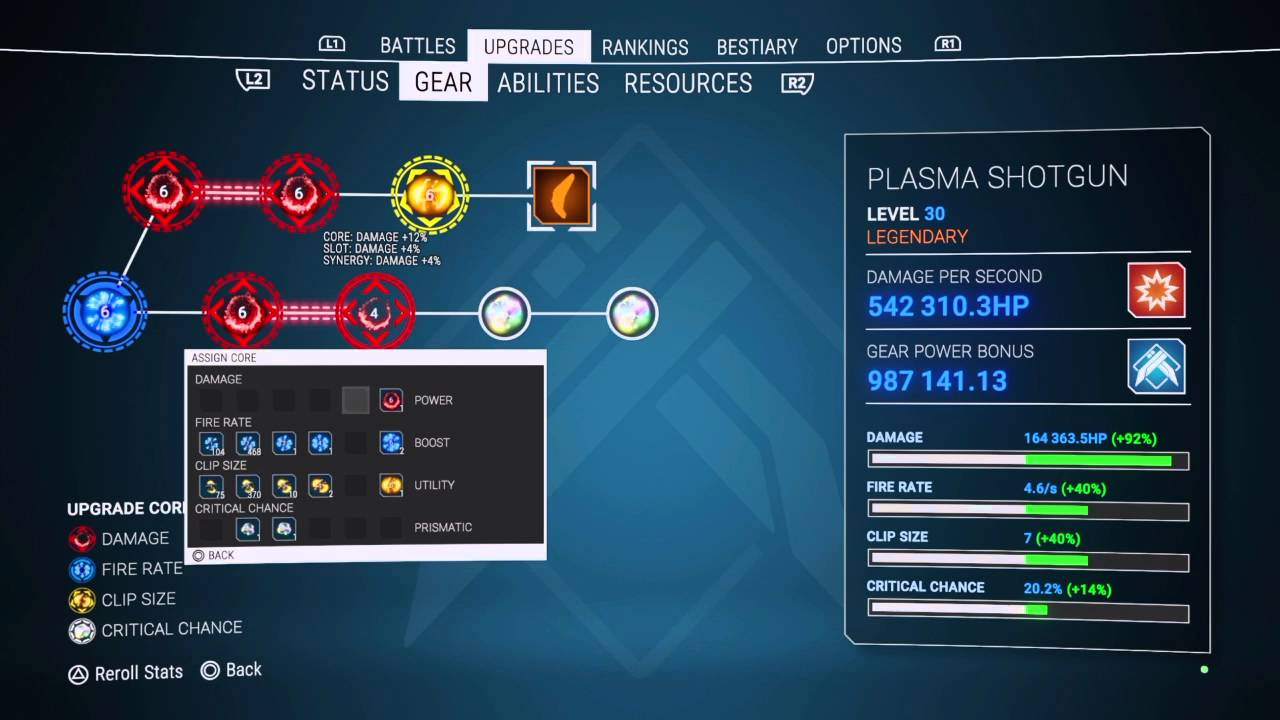
While the skill tree isn’t elaborate for each class (just three active skills and the three common passives), you earn just enough ability points to let you build your class to fit a particular playstyle. Perhaps you really focus on upgrading the Cloaking ability for the Saboteur so you can sneak up on a group of foes to rain down retribution upon them with an Artillery Strike and then sneak away. Maybe you decide to only upgrade his Plasma Sword and Strike abilities, and ignore Cloaking altogether. If you don’t like the decisions you’ve made, then don’t worry. You’re free to remove points from any ability and invest them in a different one at any time from the main menu.
As I mentioned before, it’s not just your character that progresses the more you play, but the world itself. The first few missions you tackle will be straightforward “go here, do X” affairs. After you succeed at a few, however, new mini-objectives start popping up. These may entail killing alien commanders (tougher enemies with special abilities like shooting bullets out every time they get hit) or completing special events, like defeating waves of enemies within a certain time limit. If you succeed at these extra activities you’ll be rewarded with some loot so it is worthwhile to seek them out.
Once you complete all 20 story missions the world resets, increases in difficulty, and unlocks new features, like daily missions that reward you with materials and cores, and new activities, like UFO ships that act as treasure rooms. This kind of progression gives the game more depth than one would expect from a twin-stick shooter. There’s even an endless dungeon that nets you bigger rewards the deeper you go.

On the subject of loot, all the spoils you find in Alienation fall into one of two categories: gear and cores. Gear is further subdivided into primary, secondary, and heavy weapons, and equipment, like grenades, mines, and boomerangs. All of these vary in quality ranging from common to legendary. To go even further with all of that, each character class has a set primary weapon, e.g., the Tank always uses an energy gun, while the secondary, heavy, and equipment have greater variety, e.g., the secondary weapon can be a shotgun, a revolver, or a kind of rail gun called “power shot.”
There’s just enough diversity to let players find a combination of gear and abilities to make their character feel like their own. If you find a particular weapon that you like but you’re not thrilled with a particular stat, e.g., its clip size, then you can re-roll its value using materials gained from salvaging unwanted gear. It also shows you the highest and lowest values for a particular stat so you know if it’s even worth it to try and get something better. Out of all the games I’ve played that have featured some mechanic like this, I believe Alienation may have the smartest/best implementation of it.
The other loot you’ll find scattered about are the cores. These come in four different types (red for damage, blue for fire rate, yellow for clip size, and prismatic for critical chance) and can be socketed into your weapons to increase their stats. It’s similar to how gems work in Diablo 3. What’s a little different here is that some guns will have slots of a particular color, e.g., red, that provide an additional bonus if you put the matching core into that slot. The cores themselves vary in strength (from level 1 to level 6), and you can combine three of a lower tier to make one core of the next higher one. While these let you go even further into customizing your gear, they play more of a role in the end-game content as a way to boost your damage output.